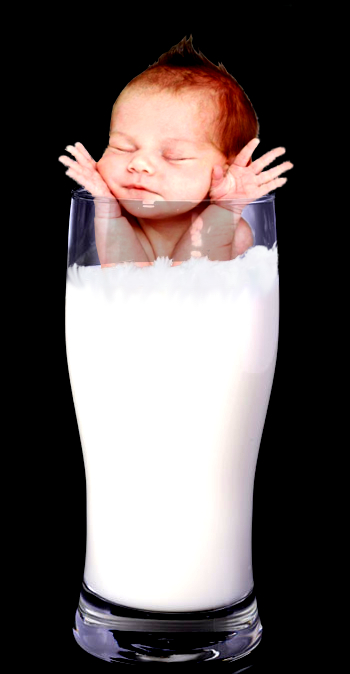Breast milk lined up for molecular check
 Australian researchers say the incredible organisation of human breast milk molecules could be part of the reason it is so healthy for babies.
Australian researchers say the incredible organisation of human breast milk molecules could be part of the reason it is so healthy for babies.
Scientists have discovered that human breast milk forms into highly organised structures during digestion in the body, and this self-assembly process might be key to releasing its vital nutrients.
A team from the Monash Institute of Pharmaceutical Sciences (MIPS) and the Mercy Health Breastmilk Bank looked at the nanostructure of breast milk to gain new insights into how it interacts with the digestive system.
“By finding out what happens to milk during digestion it will allow us to better understand how the essential nutritional components for building brain tissue and other parts of the body are absorbed. Potentially we could use these findings to design more effective food and nutritional supplements,” MIPS’ Professor Ben Boyd said.
The research team developed an ‘artificial tummy’ to simulate digestion, including tests that mimicked people with an underdeveloped digestive system such as a pre-term infant.
The structures formed in the digesting milk were then studied at a molecular level, revealing that highly organised structures are formed from the by-products of milk when digested.
The results indicated that in people lacking normal mechanisms to aid digestion, the structure of milk adapts to overcome this.
This finding may be particularly important for premature infants, whose digestive system is often not fully functional.
“This study suggests that if you’re lacking normal mechanisms to aid digestion, then there is a compensatory system present in human breast milk that adapts to allow those individuals to survive,” Professor Boyd said.
The research into human breast milk builds on previous work by the MIPS team on cow’s milk, which also revealed a highly organised structure.
Professor Boyd said the major difference between cow’s milk and human breast milk is that with the latter it contains enzymes that enable the highly organised structures to form on its own. With cow’s milk, to induce digestion an enzyme called lipase must be added to kick-start the digestive process.
“Nevertheless in both cases, the highly organised structures are formed on digestion of mammalian milk, whereas subjecting soy milk to the same digestion process does not result in the formation of these structures,” he said.
The study has been published in the journal Angewandte Chemie.[ http://onlinelibrary.wiley.com/enhanced/doi/10.1002/anie.201408320/]








 Print
Print